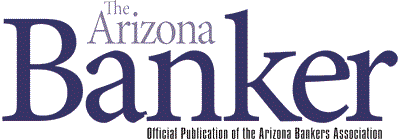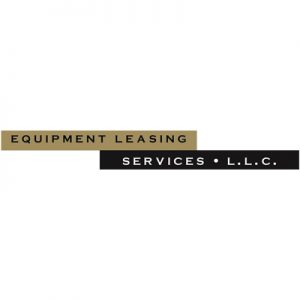Many businesses that have struggled through the past year will be pursuing opportunities to expand their markets and increase productivity through equipment upgrades and additions in products and services. The post-pandemic market will open new avenues of growth for many businesses and those banks positioned to grow with their customers.
Some of these business owners, however, may be unable to meet regulated bank underwriting criteria and consequently may fall through the cracks of the traditional equipment financing formula. While traditional loans may be declined, alternative debt sources can provide a solution to help the bank and their business customers achieve a positive outcome together.
Over the course of 20+ years in the finance industry, Equipment Leasing Services (ELS) has found alternative finance solutions that often provide banks with new paths for customer success, especially in regard to deal structure, credit, size and collateral, as exemplified by real commercial banking opportunities ELS has financed over the past year.
Structure
Providing alternative financing structures allows regional banks without a dedicated equipment division to offer an array of products that larger banks and their competition already have at their disposal.
For instance, the structure tends to be very important in the transportation industry, and one of the better lease structures available is called a Terminal Rent Adjustment Clause (TRAC) lease agreement to document and fund the acquisitions of commercial vehicles for over-the-road and local use. TRAC lease agreements provide a means to obtain the asset for the lowest possible monthly cost. It reduces the sales tax obligation while establishing a fixed residual and avoiding additional mileage charges.
Using a TRAC lease structure, ELS helped a bank customer in the freight hauling business acquire a new truck worth $150,000 for the lowest monthly cost compared to a conventional loan. Here is an example:
Loan: $150,000
Conventional Loan: $150,000
TRAC Lease: $150,000
Term: 48 Months
Rate: 5%
Conventional
Monthly Payment: $3,454.39
TRAC
Monthly Payment: $2,888.52
TRAC Residual: $30,000
By using a TRAC lease structure, the bank’s customer saved $565.87 a month, which improved their overall debt coverage ratio. It also helped alleviate the upfront costs of sales tax and down payment that the conventional loan required. Instead of putting an immediate cash strain on the business, the lease financed 100% of the equipment costs while spreading the sales tax obligation over the term.
This type of structure and documentation is not typical of bank offerings for loans, but it is something that is done regularly in many industries. In these examples, the referring bank can fund the overall request needed, or ELS can provide funding from its sources.
Credit
Underwriting criteria for banks include the overall credit quality of a customer. Credit quality may be a tough challenge for new businesses or existing struggling businesses looking for additional equipment upgrades to meet the demand for opportunities such as new contracts or expansion into new markets. It’s important for banks to be able to respond quickly to these customers and their needs and requires the bank to look for ways to meet their customer’s needs while staying within their overall credit requirements.
Between PPP loans and the uncertainty and challenges that COVID-19 has weighed on business, the past year has been a strange time. An example of this came when ELS was brought in to help supply financing for a customer in the food manufacturing and packaging business. The business had been successful for many years, but it was struggling early in 2020 when the pandemic caused a sudden revenue drop. The bank had already provided a loan to the customer earlier that year and could not increase its exposure due to the company’s losses. When the customer needed financing for manufacturing equipment to keep up with the demands of a large new contract, ELS assisted in providing the capital necessary. The company received $550K of equipment funds needed to capitalize and grow one of its most profitable contracts.
Size
There are times when a bank client has just become too large: either the client has gone beyond the bank’s ability to service a loan request, or the bank has been presented with a small loan that is not cost-effective for a bank to underwrite. It is in exactly these types of situations that alternative financing becomes a useful tool.
ELS having its own capital and funding resources proved useful when a partner bank had a great business relationship with a logistics company that wanted to refinance its fleet of vehicles and trailers. Due to the many years of working closely with the customer and providing many loans, the bank had reached its lending limit. Knowing the customer might turn to other lending institutions for financing, the bank turned to ELS. ELS was able to prevent the logistics company from needing to shop around by providing a highly competitive rate, helping to consolidate and lower the monthly payment on their fleet.
Another bank reached out to ELS because they were working on underwriting a multimillion-dollar loan for a customer, and the customer needed to finance a smaller piece of equipment worth $300K before year-end. The larger transaction was keeping the bank busy, and they didn’t have the immediate capacity needed to finance the other equipment. ELS quickly assisted in financing the smaller piece before the end of 2020 with internal funds, allowing the company to take the depreciation and get the equipment they needed.
Collateral
Banks generally have collateral requirements for lending, whether in regard to geographical location or types of collateral. This may limit their ability to extend credit to customers who have increased needs outside of these boundaries.
Collateral created an obstacle when a bank partner of ELS had a strong deposit relationship with an emergency medical flight company but was unable to provide a loan on their aircrafts and necessary equipment due to the bank’s collateral liability policy. ELS used their niche expertise in servicing specialized equipment by providing financing agreements for their aircraft and other aviation collateral.
If a company finds its business expanding out of the state of the current operation, this may create challenges for a bank only chartered to lend in specific areas. The ability to supply funds to nationwide locations for all types of equipment through ELS provides additional flexibility to the originating bank but is transparent to the customer.
This struggle came to light when a bank’s longtime client was looking at purchasing a transportation company out of state and sought to refinance the assets and secure funds needed to complete the acquisition. Through an ELS sale-leaseback of the entire fleet of trucks, funding was provided for $3.2 million in cash of the $6.0 million to complete the purchase of the existing businesses.
Alternative financing is a powerful channel for banks to meet their customers’ growth goals, thereby protecting their customer relationships in this ever-changing economy. We have financing products available for you to increase your business opportunities with clients and potential clients that may not fit within your bank’s in-house portfolio. Call us today. We can help.










